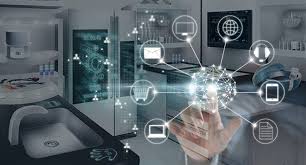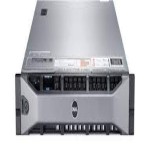From newly purchased laptops, to antiquated computers in need of replacement, all of the devices within your organization pass through a natural lifecycle. At each stage of this journey, your devices require specific management and oversight to ensure efficient performance and employee productivity. In this guide, we’ll outline everything you need to know about device lifecycle management for your business.
What is Device Lifecycle Management?
Device Lifecycle Management is the process of optimizing device usage within your organization through effective planning, procurement, provisioning, maintenance, and decommissioning.
Device lifecycle management applies to every type of device employees use in the course of their work, from laptop and desktop computers, to cell phones, to printers and smart devices in the office.
From the moment a device is purchased and configured for an employee, to the time it is retired, your business should have a documented checklist to follow.
The 5 Stages of Device Lifecycle Management
A device lifecycle management strategy typically follows these 5 steps:
1. Device Planning
Assess the device requirements for your business. Which devices should employees use? How many do you need? Start with an audit of your current device inventory to build a forecast of future needs.
2. Device Procurement
Determine how and where you purchase business devices, and when new devices should be ordered, e.g. when a new employee starts, when devices have been in use for a certain time period, etc.
3. Device Provisioning
Document which apps and software are installed on company devices when they are first brought into use, or when they are transitioned from one employee to another.
4. Device Maintenance
Implement an ongoing strategy for how devices are updated, maintained, and kept secure. This should include a plan for when devices need to be upgraded or replaced.
5. Device Decommissioning
Enforce a standardized process to securely wipe and sustainably dispose of any devices that are no longer in use.
Types of Device Lifecycle Management
Device lifecycle management applies to all of the devices used by your employees in the course of their work. However, there are two specific types of device management that should be given special attention in your strategy.
Mobile Device Lifecycle Management
Mobile Device Lifecycle Management (MDLM) refers to the management of laptops, tablets, and smartphones. MDLM involves distinct policies when compared to the management of standard desktop computers. For example, how does remote work impact your mobile device lifecycle management? How do you procure, provision, and retrieve devices from employees in different locations? What additional cybersecurity measures are required if employees access company data from home or public spaces? Make sure to factor these considerations into your company’s device lifecycle management strategy.
IoT Device Lifecycle Management
IoT Device Lifecycle Management refers to the “internet of things” – devices such as printers, smart TVs, speakers, building security systems, and more. Beyond laptops and smartphones, your device lifecycle management strategy needs to account for any equipment that connects to, or exchanges data with your wider business network. IoT devices have their own set of security vulnerabilities, and can impact a large number of employees or business functions if they suddenly stop working. Don’t forget to account for the upkeep and oversight of these devices in your lifecycle management strategy.
5 Benefits of Device Lifecycle Management
No matter the size of your business or number of devices in use, device lifecycle management offers a number of benefits to your business.
1. Cost Savings
With device lifecycle management, you can more accurately forecast when new devices need to be purchased. This prevents out-of-budget costs when devices unexpectedly cease to function, and allows more time to shop around for the best deals. With proper device inventory management, you can also avoid duplicate purchases and extract maximum value from your hardware investments.
2. Enhanced Security
Device lifecycle management helps to prevent potential security gaps by installing and maintaining consistent cybersecurity measures across your entire network of devices. Paired with a Mobile Device Management solution, all of your devices can be monitored, secured, and kept up-to-date from a single dashboard.
3. Improved Compliance
Almost all businesses have to contend with data protection laws and regulations. Device lifecycle management makes it easier to achieve and maintain compliance by monitoring device security, gaining greater visibility into how and where data is accessed, and ensuring secure disposal of unused devices.
4. Less Downtime
With regular upkeep, your devices remain healthy for longer. Crashes are prevented, device speeds are optimized, and employees experience less downtime from avoidable outages. Likewise, when a new employee is onboarded, you can ensure their device is available and appropriately configured from their first day.
5. Better Employee Experience
Less downtime and fewer device problems lead to a better employee experience. Workers are more productive, engaged, and collaborative when devices perform consistently. Alongside efficient user access management, device lifecycle management ensures employees are equipped with everything they need to do their best work.
Get Started with Device Lifecycle Management
Once implemented, a device lifecycle management strategy produces long-term, tangible advantages for your business. However, getting started can be a challenge, especially if you already have a variety of devices in use within your organization. To find out how you can get a handle on device management and optimize your devices throughout their entire lifecycle, get in touch with Electric today.









